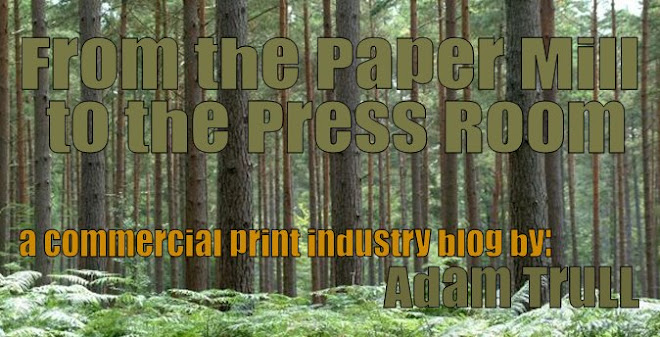What is GRACoL? (Hint: regardless of the type of commercial print work you produce, it can have an effect upon your work)
Well, if you’re a graphic designer, to you it may only be a profile that you choose for your profiles. However, the significance behind “GRACoL compliance” is very crucial to how your project is printed. So what is GRACoL compliance?
Well, it’s a continuous improvement process for printers to align their proofers and presses aim towards a specific performance target called grey-balance. Grey-balance is the combination of a specified density of CMYK to create a perfect neutral grey. If a commercial printer is printing in perfect grey-balance, it would mean that regardless of the press and paper, they would achieve the neutral grey if they printed the specified densities of cyan, magenta, yellow, and black. This would mean that a printer would have to continually test different paper stocks on different presses to finally achieve grey-balance (and of course paper and press performances are continually evolving).
Think of grey-balance as baking a cake. Regardless of the oven it’s baked in and the types of flour, sugar, milk, etc, the cake would always taste the same, because you had tested all of the types of ingredients and ovens and knew how they would all factor into the final outcome of the cake.
But it’s much more quantitative in the printing world. To test, we continually scan test-sheets and review the variation of expected densities and actual densities of CMYK across the entire sheet. We then tell our plate makers what plate curves will need to made to accommodate for the variation. Our proofers then output a proof that takes into consideration the stock and press it will be printing on.
What does this mean for your project?
It means that the beginning point for accurate color will be easily attained. It means that FAR less compromising on color will have to be made. It means that there is a much finer target that takes into consideration many crucial factors, so that there is a very clear understanding to predicting color accuracy. It means that as long as a file is proofed with our GRACoL profile, then we can match color more accurately.
Acme Printing continues to be one of a select group of GRACoL certified printers in the northeast (we are certified in both sheet-fed and web). Additionally, we employ a GRACoL certified expert on-site to continually test and improve the performance of our presses.
For you, the most important thing, is that GRACoL is another “piece of mind”, knowing that Acme is in the small percentage of premium-quality printers adhering to these color and quality measures.
Friday, October 31, 2008
Wednesday, October 1, 2008
Understanding Forest Stewardship Council (FSC) and Sustainable Forestry Initiative (SFI)
So unless you’ve been under a rock for the past four years, you’re familiar with the term Forest Stewardship Council or FSC Certification. The nickel definition of the FSC employs a few key points:
1.) That the logging, milling, manufacturing, and handling of paper is done so to protect the sustainability of the forest, the waterways, wildlife, and indigenous peoples of the surrounding area, and
2.) That every party that handles FSC certified stock does so to comply with very rigorous handling requirements. The SFI or Sustainable Forestry Initiative follows nearly identical compliance requirements.
Well then, what makes the two different? To start it should be known that some of the key differences are that:
1.) The FSC carries more brand recognition because of their successful global-marketing efforts. Though, I’ve been seeing SFI billboards on the highway lately.
2.) The SFI carries has significantly more options in both premium and low-grade sheets. This is because many of our North American paper forests are owned by small private forest owners, and simply, it costs far less to carry the SFI certification for these private owners.
As Acme is both FSC and SFI certified, I have no partisanship in either. To dig further into this, I was directed to International Paper’s, "Sustainability Update" (June 2007), which provided me with the graphic below (click on picture for a full-sized image):

1.) That the logging, milling, manufacturing, and handling of paper is done so to protect the sustainability of the forest, the waterways, wildlife, and indigenous peoples of the surrounding area, and
2.) That every party that handles FSC certified stock does so to comply with very rigorous handling requirements. The SFI or Sustainable Forestry Initiative follows nearly identical compliance requirements.
Well then, what makes the two different? To start it should be known that some of the key differences are that:
1.) The FSC carries more brand recognition because of their successful global-marketing efforts. Though, I’ve been seeing SFI billboards on the highway lately.
2.) The SFI carries has significantly more options in both premium and low-grade sheets. This is because many of our North American paper forests are owned by small private forest owners, and simply, it costs far less to carry the SFI certification for these private owners.
As Acme is both FSC and SFI certified, I have no partisanship in either. To dig further into this, I was directed to International Paper’s, "Sustainability Update" (June 2007), which provided me with the graphic below (click on picture for a full-sized image):

As I always, I invite any further questions that you have about this topic. It’s certainly a big topic that I’ve tried to compress into a few short paragraphs.
Subscribe to:
Posts (Atom)

